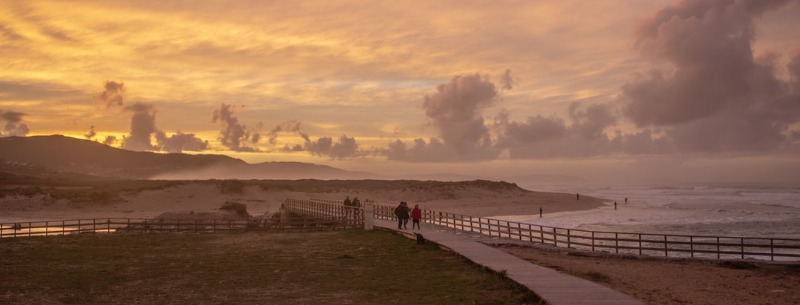Best of La Coruna, Spain Tourism
A Coruña, the largest city in Northern Spain’s province of Galicia, is sadly overlooked by many visitors to the area. While pilgrims flock to rainy Santiago de Compostela, just 75km to the south, A Coruña receives a fraction of the visitors the smaller city sees every year.
However, those who make the trip north (and it takes just half an hour by train) are rewarded by a city that’s got it all: great food, an excellent atmosphere, an interesting history, and clean, white-sand beaches.

A note on the name of the city: A Coruña is the Galician name, and since it’s a Galician city, it’s the correct one to use while you’re there. La Coruña is the Spanish equivalent, and Corunna is the English version. In reality, most coruñeses just say “Coruña” and leave it at that, but if you’re trying to find the city in an alphabetised list (for example when booking a hotel or train trip online) it could be listed under “A” (as on renfe.es) or “L” (as on hostelbookers).
Morning
Start your day with a light breakfast at Siboney cafe on Rua Nueva, where the coffee is good and the prices excellent. For less than €2 you can have a croissant, a small juice, and a coffee made with freshly-roasted beans — in my opinion, it’s the best coffee in the city.

Plaza Maria Pita
Walk up Calle Real towards Plaza Maria Pita, and check out this impressive square. The Ayuntamiento (town hall) takes up one entire side, and cafes and restaurants fill the ground floor spaces of two of the other three sides.
If you’re up for a walk, head north out of the square (pass the Ayuntamiento) and walk for five minutes or so until you reach the water. Turn left and follow the coast road (known as the Paseo Maritimo) all the way to the Torre de Hercules. You’ll pass several tiny beaches, a sculpture park, and a golf course, and you’ll have excellent views out to sea. You can catch a bus to the tower if you’re not feeling energetic, but you’ll be missing out.
Torre de Hercules
The Tower of Hercules (Torre de Hercules) is a Roman lighthouse with a distinctively 17th-century look about it, due to a restoration that took place at that time. However, the original Roman structure can be found within, and it’s well worth a visit. It’s a Unesco World Heritage site and the city’s symbol, and if that wasn’t enough, entry is only €2.

From here, continue along the Paseo Maritimo and you’ll pass the Casa de los Peces (aquarium). Entry is €10, and if you’re not keen to go in you can still see the seals’ enclosure from the road.
Domus museum
Continue on and you’ll see a large shiny building to your left; this is the Domus museum, which celebrates the human body. It’s worth a visit for its excellent hands-on exhibits, and it only costs €2. By this time though, you’re probably ready for lunch.
Lunch
Lunch is the main meal of the day in Spain, so don’t skimp — have a menu del dia. You’ll find these three-course meals in almost all restaurants, with the normal range of price and quality. Expect to pay €8-12 for your meal, which will include a first course (normally of salad or soup); a second course (which is often a choice of fish or meat); a dessert or a coffee; and a drink and bread. Your drink is usually a choice of wine or water, though you might also be served a bottle of gaseosa (a generic soft drink a bit like Sprite) to mix with your wine. Some restaurants let you have beer instead, but not the cheapest places.
Afternoon
You might be ready to relax after your large lunch, so head to the beach. There are plenty to choose from, but Orzán and Riazor are the largest and most popular. Hopefully you’ll have a nice day to soak up the sun! If not, a siesta back at your accommodation would be perfectly in keeping with the culture of the town.

Panoramic Elevator
After your rest, head along the beach away from the tower, and follow the Paseo Maritimo until you reach the Ascensor del Monte de San Pedro — the panoramic elevator. This will take you up to the top of the hill, where you’ll find a large park featuring great views over the city, as well as a labyrinth and old gun emplacements. You can walk down the hill on the other side, and not far from the base is a bus stop where buses will take you back into the city if you’re too tired to walk. Buy your ticket from the driver, a single ride costs €1.20.
Evening
A Coruña is a great place to be in the evening, especially if you’re there over summer, when something is always going on. However, the great ambience lasts all year, as do the tapas. Tapas are small portions of food, and while they’re available all over Spain, there’s something special about the tapas in Coruña. I’m not sure if it’s that they’re so cheap, or so tasty, or so prevalent… whatever it is, tapas are awesome.

You can usually choose between a tapa, a ración (full portion) or a media ración (half portion) of the same dish; choose several tapas rather than large portions so that you can taste a range of dishes. Make sure to try tequeño (a bread stick stuffed with cheese) zorza and raxo (spicy and not spicy pork) and pimientos de padrón (small green peppers that are sometimes spicy, sometimes not). The best value for money tapas restaurants are La Bombilla on Calle de Torreiro and O Recuncho de Mayte on Calle Pórtico de San Andrés.
There’s plenty more to do in A Coruña than just eat, drink and enjoy the views, but this itinerary is a good place to start.
